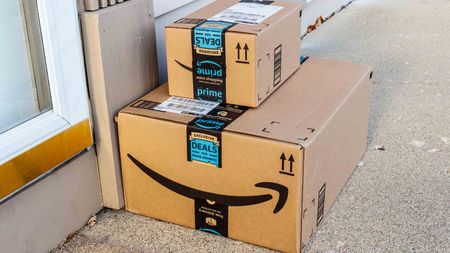6 Ways to Stage Your Home for Less Than $1,000
Use these six staging strategies to get the best price in the shortest time without spending a fortune.

Staging a home for sale is all about making it inviting to the largest number of potential buyers. If a home is vacant, a stager will haul in furniture and décor so buyers can imagine themselves living there. If it’s occupied, the stager will declutter, neutralize and decorate for the masses. (See the related slide show: Real-World Examples of Home Staging for Less Than $1,000.)
Staging won’t make a home sell for more than it’s worth. But it can set your home apart and boost the selling price to the top of the range for comparable homes. It can also cut the time on the market. Because nearly 90% of home buyers start their search on the Internet, staging is a good way to make sure online photos pop.
Home sellers spend an average of $1,800 to stage a home, but costs can range from a couple of hundred dollars to $5,000 or more. Here are six ways to stage your home for less than $1,000.

Sign up for Kiplinger’s Free E-Newsletters
Profit and prosper with the best of expert advice on investing, taxes, retirement, personal finance and more - straight to your e-mail.
Profit and prosper with the best of expert advice - straight to your e-mail.
Virtually stage your vacant property. Virtual staging is aimed at online shoppers who may quickly lose interest in a slide show full of floors, ceilings and bare walls. Sellers or their real estate agents send pictures of the empty rooms — a 2- or 3-megapixel camera is all you need — to a virtual stager, who sends back images of the same rooms, tastefully furnished, for use online and in marketing materials.
Ethical stagers won’t alter the color of floors or walls, improve the view, change light fixtures or fix imperfections. Nor will they work from photos of furnished rooms because they don’t know what lurks under the existing rug or behind the real-life sofa. Still, for buyers, it goes without saying that there’s no substitute for an in-person tour.
Virtually Staging Properties, in Atlanta, charges $225 for three virtually staged photos, $280 for four and $325 for five. Send in a high-quality photo (at least 5 megapixels) and for $50 you can get an 8-by-11-inch paper enlargement to mount on the wall so that open-house visitors can see an empty room’s potential.
Virtual Staging Solutions, in Cranford, N.J., recently offered three virtually staged photos for $197.
Pay for a plan, do the labor yourself. Many stagers work as consultants, touring your house and offering suggestions on how best to present it. Barb Schwarz, a longtime home stager and founder of the International Association of Home Staging Professionals, says the average fee for a consultation is $350 and often involves a tour of the property that lasts two hours or longer, photos and a 30- to 50-page report.
No Vacancy in Atlanta, Virtually Staging Properties’ sister company, charges $250 for a three- to four-hour consultation split over two days — the first to give you ideas and the second a couple of weeks later to suggest finishing touches. In Minneapolis, Lori Matzke, founder of Center Stage Home, charges $250 for a 90-minute walk-through. Customers are in charge of taking notes, so she encourages them to follow along with a video camera.
When working with a consultant, you do the cleaning, the decluttering and the trips to the dump, or rental of storage space. Load up an 8-by-8-by-12-foot or 8-by-8-by-16-foot portable storage unit from PODs, which will deliver the unit to your driveway for $75, transport it to a secure storage facility for another $75 and charge you a monthly storage fee of around $150, depending on where you live, the time of year and other factors.
Among the accoutrements of home you’ll need to jettison or stow: family photos, magazines, toys, cosmetics and other grooming supplies in the bathroom, and countertop appliances and cutting boards in the kitchen. “Pretend you’re camping,” says Schwarz. Leave only necessities, and store them in cabinets.
Paint rooms in light, neutral colors, which are widely appealing and make your rooms look bigger. “Different-colored bedrooms are like Ginsu knives that chop up space,” says Schwarz. Put a touch of greenery in every room — preferably harvested from the backyard.
Negotiate a vignette. A staged home calls for scenery—for example, a ficus tree, a beautiful chair and a side table with accessories. If you don’t need furniture brought into an otherwise empty space, you may be able to negotiate for décor only — call it a pizazz package. No Vacancy will bring in wall art, area rugs, lamps and other accessories to neutralize and update a customer’s existing furnishings. The service runs roughly $250 per month, with a three-month minimum, plus one month’s fee for setup and breakdown. Center Stage Home charges just $600 for three months; adding heavy pieces, such as a sofa, tacks another $300 to the tab.
Focus on just a few rooms. Spend your budget on the entryway, main living area, kitchen and master bedroom. Many stagers charge an hourly rate -- $75 to $125 is typical. Ignoring secondary rooms, or doing them yourself once you’ve seen how the pro works, can save hundreds of dollars.
Do tackle particularly challenging areas — say, an attic bedroom with odd angles and crannies or a pink-tiled bathroom in an older home. You needn’t go overboard. A soft, creamy paint color, such as a pale gold, on the attic walls and ceiling will downplay angles and make the ceiling seem higher. Tone down a Pepto-Bismol look in the bathroom with white and black — tie a white shower curtain on the rod with black-and-white ribbons, and hang black bath towels.
Shop at home. Scour the house, yard, garden shed and garage to carry out your home’s transformation. Schwarz recalls facing a challenging boy’s bedroom once, which had a broken curtain rod, torn drapes and a collection of disturbing posters. A tour of the shed, yard and garage yielded a trove of fishing equipment and—voilà—a new theme. A fishing pole replaced the broken curtain rod, and a sheet from the linen closet, tied back with rope, became the curtain. Atop the dresser: a tackle box, some fishing books and a lamp placed inside a cleaned-up fishing boot. The other boot became a planter for some alder branches from the backyard. The headboard was draped in a fishing net adorned with lures. Cost: virtually zero. And when the house sold, the buyers asked that the décor convey.
In the main living areas, though, themes are best avoided. “The whole idea is to appeal to as many buyers as possible,” says Matzke. “Themes can be distracting.” Think flexibly as you rearrange furniture: a nightstand can be an end table, a bureau can be a buffet, and a hutch can double as a bookcase. Cardboard moving boxes can stand in for a bed in an unfurnished bedroom. Cover with a gorgeous spread and pillows and no one will know. Still missing something? Shop Craigslist.org, or ask family and friends for a loan.
Step outside. Clean up debris and pull dead plants or shrubs. Trim remaining greenery, especially anything blocking a window. Banish planters, barbecue grills and toys from the deck. You can’t paint your home’s entire exterior for less than a grand, but you can refresh the front and garage doors with a coat or two; ditto for the shutters and trim, especially window ledges, and the mailbox. Clean up rust spots or streaks on downspouts while you’re at it, and repaint or restain the fence. Typical cost for exterior touch-up, including repairs to chimney, gutters, roof and porch: $660 to $940, according to HomeGain.com, a home-marketing Web site.
Get Kiplinger Today newsletter — free
Profit and prosper with the best of Kiplinger's advice on investing, taxes, retirement, personal finance and much more. Delivered daily. Enter your email in the box and click Sign Me Up.

Anne Kates Smith brings Wall Street to Main Street, with decades of experience covering investments and personal finance for real people trying to navigate fast-changing markets, preserve financial security or plan for the future. She oversees the magazine's investing coverage, authors Kiplinger’s biannual stock-market outlooks and writes the "Your Mind and Your Money" column, a take on behavioral finance and how investors can get out of their own way. Smith began her journalism career as a writer and columnist for USA Today. Prior to joining Kiplinger, she was a senior editor at U.S. News & World Report and a contributing columnist for TheStreet. Smith is a graduate of St. John's College in Annapolis, Md., the third-oldest college in America.
-
 Stock Market Today: Stocks Are Mixed Before Liberation Day
Stock Market Today: Stocks Are Mixed Before Liberation DayMarkets look forward to what comes with the reordering of 80-year-old global trade relationships.
By David Dittman Published
-
 Stagflation: What It Is and Why Retirees Should Care
Stagflation: What It Is and Why Retirees Should CareStagflation — the economic bogeyman of the 1970's — may return to the US. Here's what it could mean to your retirement.
By Donna Fuscaldo Published
-
 Roth IRA Contribution Limits for 2025
Roth IRA Contribution Limits for 2025Roth IRAs Roth IRA contribution limits have gone up. Here's what you need to know.
By Jackie Stewart Last updated
-
 How to Find Foreclosed Homes: Best Foreclosure Listings Sites
How to Find Foreclosed Homes: Best Foreclosure Listings SitesMaking Your Money Last Find foreclosed homes for sale on these foreclosure listing websites. Search for properties on these free, paid or government sites.
By Bob Niedt Last updated
-
 Luxury Home Prices Rise as the Rich Dodge High Mortgage Rates
Luxury Home Prices Rise as the Rich Dodge High Mortgage RatesLuxury home prices rose 9% to the highest third-quarter level on record, Redfin reports, growing nearly three times faster than non-luxury prices.
By Kathryn Pomroy Published
-
 Four Tips for Renting Out Your Home on Airbnb
Four Tips for Renting Out Your Home on Airbnbreal estate Here's what you should know before listing your home on Airbnb.
By Miriam Cross Published
-
 Five Ways to a Cheap Last-Minute Vacation
Five Ways to a Cheap Last-Minute VacationTravel It is possible to pull off a cheap last-minute vacation. Here are some tips to make it happen.
By Vaishali Varu Last updated
-
 How to Figure Out How Much Life Insurance You Need
How to Figure Out How Much Life Insurance You Needinsurance Instead of relying on rules of thumb, you’re better off taking a systematic approach to figuring your life insurance needs.
By Kimberly Lankford Last updated
-
 Amazon Big Deal Days Is Coming! We’ve Got All the Details
Amazon Big Deal Days Is Coming! We’ve Got All the DetailsAmazon Prime To kick off the holiday season with a bang, Amazon Big Deal Days runs Tuesday, October 8 and Wednesday, October 9.
By Bob Niedt Last updated
-
 How to Shop for Life Insurance in 3 Easy Steps
How to Shop for Life Insurance in 3 Easy Stepsinsurance Shopping for life insurance? You may be able to estimate how much you need online, but that's just the start of your search.
By Kaitlin Pitsker Last updated